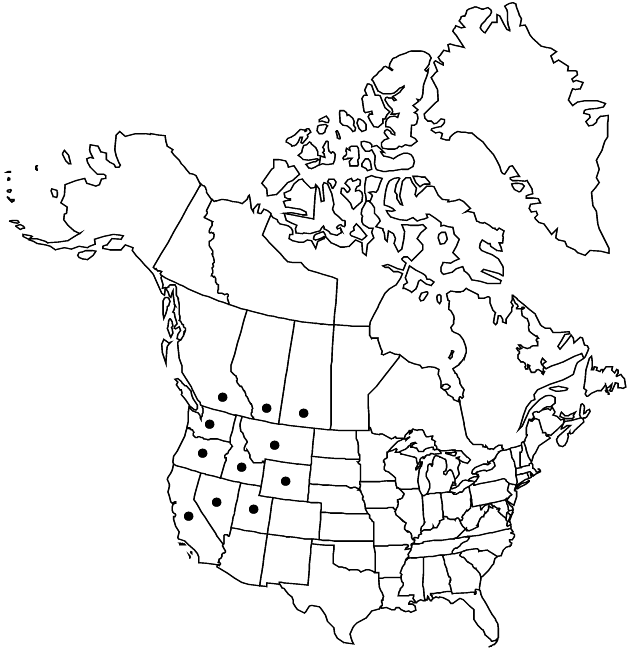Psilocarphus brevissimus
Trans. Amer. Philos. Soc., n. s. 7: 340. 1840.
Plants greenish to grayish, sericeous to densely lanuginose. Stems (1–) 2–10, erect to prostrate; proximal internode lengths mostly 0.5–1.5 (–2) times leaf lengths. Capitular leaves ± erect, appressed to heads (sometimes spreading), linear-lanceolate to ovate, widest in proximal 2/3, longest 8–25 mm, lengths mostly 1.5–6 times widths, 1–2.5 (–3) times head heights. Heads ± spheric, rarely ovoid, largest 6–14 mm. Receptacles unlobed or ± lobed. Pistillate paleae hidden by or visible through indument, longest 2.8–4 mm (lengths 1.5–6 times longest diams.; wings subapical to ± median). Staminate corollas 0.8–1.6 mm, lobes mostly 5. Cypselae narrowly obovoid, ± compressed, 0.8–1.9 mm. 2n = 28.
Distribution

Alta., B.C., Sask., Calif., Idaho, Mont., Nev., Oreg., Utah, Wash., Wyo., s South America
Discussion
Varieties 2 (2 in the flora).
Selected References
None.
Key
| 1 | Heads ± spheric, largest 6–9 mm, receptacles unlobed or shallowly lobed; pistillate paleae obovoid, lengths 1.5–3 times longest diams., wings supramedian to subapical | Psilocarphus brevissimus var. brevissimus |
| 1 | Heads ovoid, largest 9–14 mm, receptacles deeply lobed; pistillate paleae ± cylindric, lengths mostly 3.5–6 times longest diams., wings ± median | Psilocarphus brevissimus var. multiflorus |